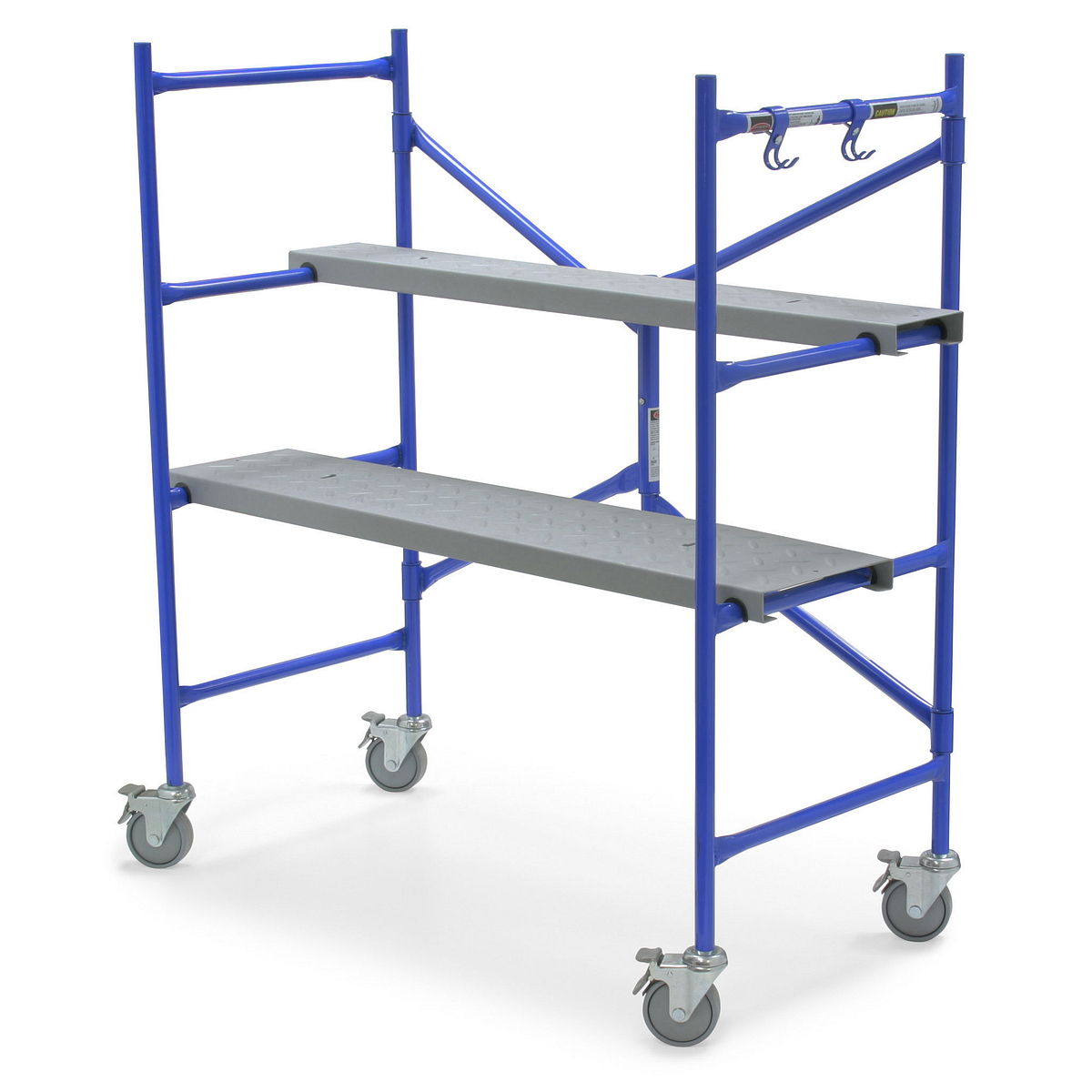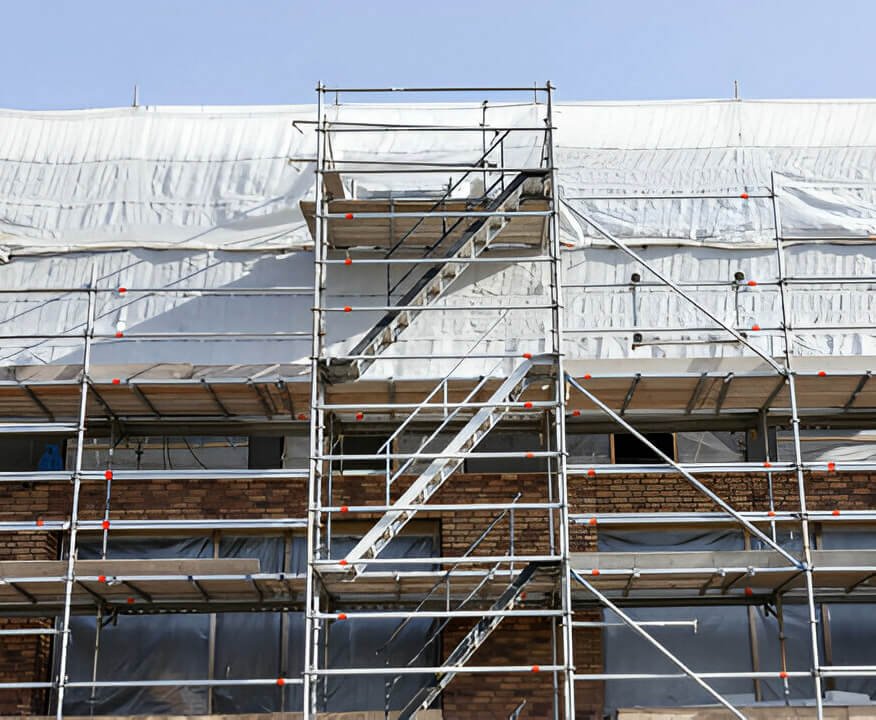Residential Scaffolding Solutions for Safe and Efficient Home Improvements
Residential Scaffolding Solutions for Safe and Efficient Home Improvements
Blog Article
A Comprehensive Overview to the Crucial Attributes of Scaffolding in Modern Building
The landscape of modern-day construction significantly relies on effective scaffolding systems that prioritize safety, performance, and innovation. As tasks grow in complexity, recognizing the important functions of scaffolding becomes essential for ensuring worker security and enhancing job timelines.
Sorts Of Scaffolding
Although scaffolding systems can differ widely in layout and application, they generally come under numerous distinct categories that accommodate different building and construction demands - Scaffolding. The most usual types consist of supported scaffolding, suspended scaffolding, and rolling scaffolding
Sustained scaffolding consists of systems sustained by a structure of poles, which provide a elevated and secure working surface. This type is commonly utilized for tasks that need significant altitude, such as bricklaying or external paint.
Put on hold scaffolding, alternatively, is utilized for jobs requiring access to high altitudes, such as cleaning or repairing structure facades. This system hangs from a rooftop or another framework, allowing employees to reduced or elevate the platform as needed.
Rolling scaffolding features wheels that allow for easy flexibility throughout a task website. It is specifically useful for tasks that require constant moving, such as interior job in large spaces.
Each kind of scaffolding is made with particular applications in mind, making sure that building and construction tasks can be executed efficiently and efficiently. Understanding these categories is important for selecting the appropriate scaffolding system to meet both project needs and website problems.
Key Security Attributes
Security is vital in scaffolding systems, as the potential risks connected with working at heights can bring about severe accidents if not properly handled. Key safety functions are necessary to make sure the wellness of employees and the stability of the building website.
Most importantly, guardrails are crucial. These obstacles supply a physical guard against drops, substantially minimizing the risk of major injuries. Additionally, toe boards are commonly made use of to avoid devices and materials from diminishing the scaffold, safeguarding workers below.
Another important component is making use of non-slip surfaces on platforms. This attribute improves grasp, specifically in unfavorable climate condition, thereby reducing the probability of slides and falls. Moreover, gain access to ladders must be securely placed to facilitate safe entrance and exit from the scaffold.
Routine evaluations and upkeep of scaffolding systems are also vital. These inspections ensure that all elements are in excellent condition and working appropriately, addressing any wear or damage quickly.
Finally, correct training for all employees involved in scaffolding procedures is necessary to guarantee that they comprehend safety and security protocols and can identify prospective risks. Scaffolding. Collectively, these attributes create a more secure working atmosphere and substantially minimize dangers related to scaffolding
Product Innovations
Developments in material scientific research have significantly affected the scaffolding sector, improving both security and performance in modern building and construction. The introduction of high-strength steel and light weight aluminum alloys has actually transformed traditional scaffolding systems. These products are not only lighter, making them easier to set up and move, but likewise supply remarkable load-bearing capabilities. This results in scaffolding structures that can support greater weights while reducing the danger of collapse.
In addition, cutting-edge composite products, such as fiberglass-reinforced plastics, have actually become feasible options. These materials are immune to deterioration and ecological degradation, thus expanding the life-span of scaffolding systems, specifically in harsh weather conditions. The use of such materials adds to lower maintenance expenses and guarantees consistent efficiency with time.


Layout Factors To Consider
Considering the complexities of modern-day construction jobs, efficient scaffolding design is extremely important to ensuring both capability and security. Design factors to consider need to incorporate different elements, including lots ability, height, and the specific needs of the building and construction website. Each job presents one-of-a-kind difficulties, demanding a versatile approach to scaffolding systems that can adapt to differing conditions.
Architectural integrity is vital; as a result, designers must calculate website link the tons that the scaffolding will sustain, including employees, materials, and equipment. The choice of materials plays a crucial role in guaranteeing the scaffolding can hold up against these tons while continuing to be lightweight and long lasting. In addition, the design needs to permit for easy access and egress, assisting see page in the smooth movement of products and employees.
Safety and security attributes, such as guardrails and non-slip surface areas, ought to be included to lessen dangers of mishaps. Additionally, the layout should take into consideration the surrounding setting, consisting of surrounding structures and prospective hazards. By addressing these design considerations, building and construction companies can boost the efficiency of scaffolding systems and promote a safer working atmosphere, eventually adding to the overall success of the job.
Upkeep and Inspections
The effectiveness of scaffolding systems expands past first style and application; continuous maintenance and routine evaluations are essential to ensuring their continued performance and safety throughout the period of a job. Normal assessments should be performed by qualified employees to determine any indications of wear, damages, or instability that could endanger the integrity of the scaffolding.
Maintenance procedures should consist of routine checks of structural elements, such as slabs, structures, and fittings, making sure that all elements continue to be complimentary and safe from corrosion or other wear and tear. Additionally, the functionality of safety and security attributes, such as guardrails and toe boards, have to be analyzed to guarantee conformity with safety laws.
Paperwork of all examinations and maintenance tasks is crucial for responsibility and regulative conformity. A systematic method to record-keeping not only aids in tracking the problem of the scaffolding but also gives required evidence in the occasion of an occurrence.
Ultimately, establishing a thorough maintenance and inspection schedule will significantly minimize the risk of mishaps and boost the general safety blog and security of the building and construction site. By prioritizing these techniques, building and construction managers can safeguard employees and promote the task's integrity.

Final Thought
To conclude, the necessary features of scaffolding in modern-day construction incorporate a variety of crucial elements, consisting of varied types, vital safety and security devices, material developments, and thoughtful style considerations. Highlighting security via guardrails and non-slip surfaces, along with developments in products like high-strength steel, enhances both efficiency and sustainability. Additionally, normal upkeep and examinations are crucial for guaranteeing structural integrity and safety and security on building and construction sites, ultimately helping with efficient job implementation and promoting the wellness of employees.
The landscape of modern building increasingly relies on efficient scaffolding systems that prioritize safety, efficiency, and technology.Developments in material science have dramatically influenced the scaffolding industry, improving both safety and security and efficiency in modern construction. Overall, these material innovations not just enhance the efficiency and safety of scaffolding systems however likewise align with the sector's press towards sustainability, as lots of modern products are developed to be a lot more ecologically friendly.
Thinking about the complexities of modern building tasks, reliable scaffolding style is vital to ensuring both performance and security.In final thought, the important attributes of scaffolding in modern-day construction include a variety of crucial components, consisting of varied kinds, crucial safety and security systems, product advancements, and thoughtful style factors to consider.
Report this page